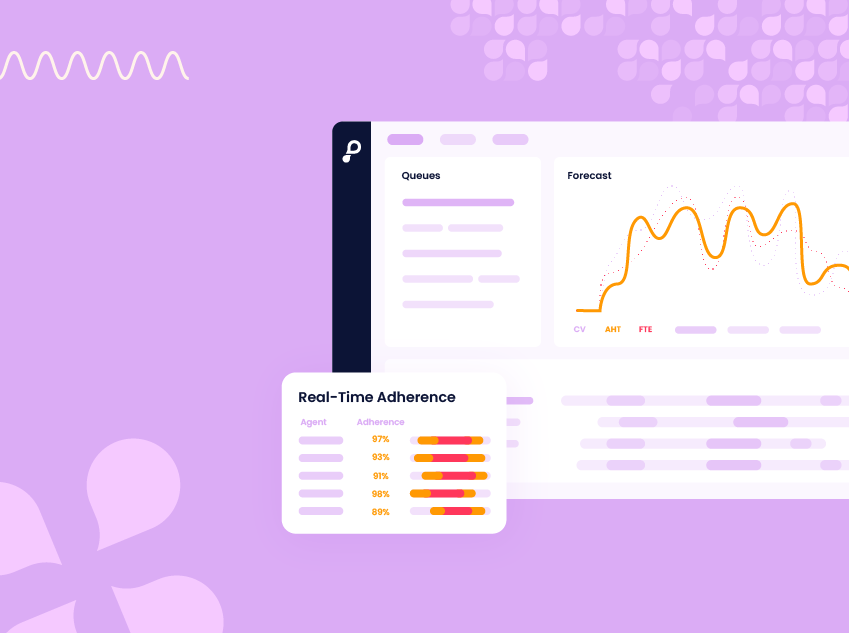3 Steps from WFM to WFO for exceptional customer service
According to Pete Dempsey from Puzzel it’s time to transition from Workforce Management to Workforce Optimisation for true efficiency and effectiveness in contact centres. Here, he shares 3 tips for making the change.
Workforce Management (WFM) has been an essential solution for busy contact centre leaders for many years. At the touch of a button, they were in control, swiftly ensuring the right number of agents were available at the right time to meet customer demand. Then digitalisation and rising customer expectations came along. All of a sudden, contact centres faced a new set of dynamics that threatened to see once-loyal customers and employees flee to the competition.
Recent research from Puzzel’s own WFM partner Verint discovered that two-thirds of consumers are prepared to move to brands offering superior service. At the same time, 77% of people believe convenience is a major factor when choosing a brand or service provider, while 60% of consumers expect to engage with an organisation via any channel at any time.
Suddenly, WFM on its own may not be enough in this new ‘always-on’ era of service. However, as an “old faithful” solution contact centres could still see its value. What was to be done? Fortunately, the answer lay close at hand. With the introduction of Workforce Optimisation (WFO), managers can keep their treasured WFM platform but stretch it to its limit, making it broader and more strategic.
When Puzzel drew a poll of delegates at its latest webinar, nearly half said they hadn’t yet deployed any kind of WFO solution. Therefore it is time to explore a whole new world of possibilities and transition from WFM to WFO to drive real efficiency and effectiveness in contact centres.
WFO: 3 ways to take control of omni-channel, employee satisfaction and CX in one go
Dip deeper into the capabilities that already exist in your WFM to enhance omni-channel interactions, increase employee engagement and upgrade your CX programme with a robust WFO strategy. Here are 3 steps to get started:
1. Be strategic – WFM provides a solid foundation for moving from tactical scheduling and forecasting towards exploiting the full potential of automation, real-time reporting, predictive analytics and scalability to support customer and employee engagement programmes in a highly strategic way.
In Puzzel’s experience, voice interactions are increasing and that looks set to continue, therefore it is important to have the right technology in place to manage these conversations effectively. Employees love new technology when it helps them do their jobs better. Use WFO to motivate and inspire people by maximising the breadth of functionality available in modern WFO solutions.
2. Explore the technical options available – to drive efficiency and effectiveness. Be sure to look for the following integrated capabilities from a single technology partner:
– Performance Management (PM) – to monitor all interactions and highlight skills gaps and training requirements. Use it to empower staff and managers by building clear, meaningful career paths for employees and create top- performing teams
– Quality Management (QM) – monitoring interactions is not enough. Contact centres need to track the quality of those interaction to reveal areas of improvement for employees, processes and the organisation. QM easily evaluates all customer communication to do just that
– Interaction Analytics – interestingly, from Puzzel’s own webinar poll, 91% of organisations have not yet implemented an analytics solution and yet these harness invaluable data and insights from 100% of customer conversations, whether they are voice or text-based, to support faster, improved decision-making. Analytics is no longer a “nice to have”, but a “must have”.
– Desktop and Process Analysis – what goes on behind the scenes is just as important as direct face time with customers. Gain valuable intelligence by analysing employee desktop activity. Are they using the right applications? Are PC or CRM issues holding them back? This type of intelligence helps to optimise productivity, improve processes and ensure compliance.
3. Take the lead from real-world successes – and use WFO to transform employee engagement and the customer experience (CX). From my experience one company in the banking sector achieved 97% efficiencies by using Quality Management, Performance Management and Speech Analytics. WFO then enabled measuring and rewarding good agent performance with financial bonuses to maintain momentum. Another company successfully identified the root cause of long call durations by using Speech Analytics to pick up on two common questions: ‘How soon can I retire?’ and ‘What will my monthly income be?’ The organisation has since embedded its special pensions calculator into the CRM system to accelerate response times. Finally, a third company used Speech Analytics to establish that whenever the word “unfortunately” was used in conversation, no matter what the outcome of the call, the CSat results were always zero.
Using WFM as the starting point, you’ll be surprised how few steps you actually need to take that all important leap into WFO for exception customer service. For more information on Puzzel’s WFO capabilities or to download Puzzel’s recent webinar “How to use WFO for efficiency and effectiveness”.
Pete Dempsey is the WFO Consultant at Puzzel
[1] Verint Systems Inc in association with Opinium Research LLP – “Engagement in the Always-on Era – How humans and technology work hand-in-hand to meet rising expectations” – a study of more than 34,000 consumers across 18 countries. See Verint’s recent press release:https://www.verint.com/press-room/2019-press-releases/study-shows-two-thirds-of-consumers-prepared-to-flee-to-brands-offering-superior-service/






